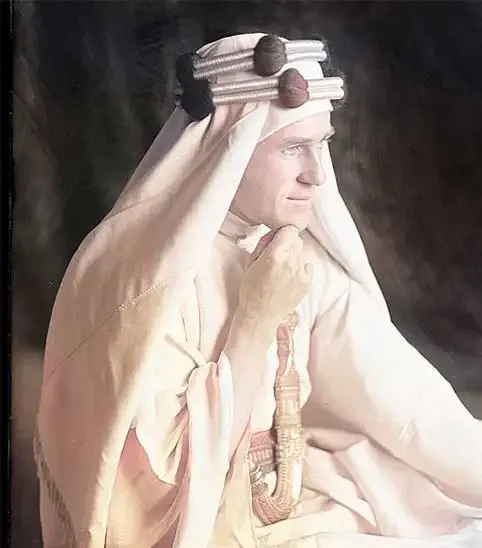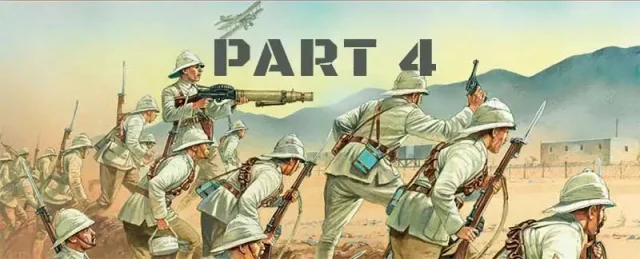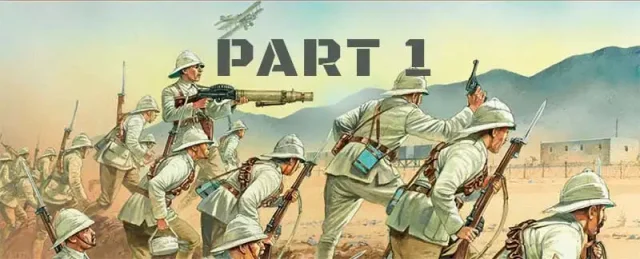- Military History
- Conflicts & Wars
- World War I
- Involved Nations WWI
- Arabia during World War I - The Arab Revolt - Part 5
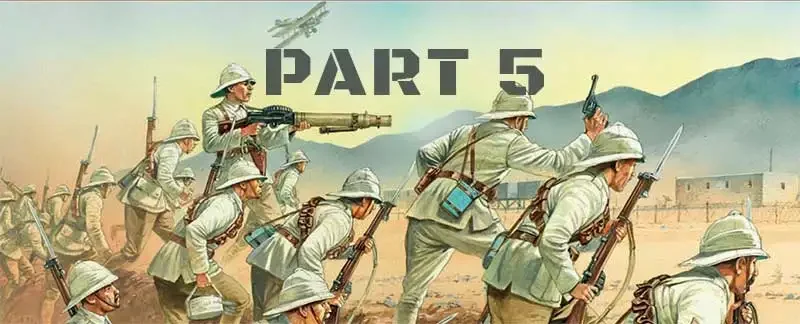
Arabia during World War I - The Arab Revolt - Part 5 The Legacy of the Arab Revolt
For the people of Arabia and the Syrian provinces, the implosion of Ottoman power following the war had profound effects. Few who became involved in the revolt could have imagined that the final dispensation would turn out as it did. The Middle Eastern region had been changed entirely.
Index of Content (Part 5 - last in the Series)
The Legacy of the Arab Revolt
The Hejaz
On 25 May 1919, Capitaine Raho of the French mission was killed in action in the Taraba region of the Hejaz while serving with the Arab Eastern Army of the Emir Abdullah. His military career, which stretched back to the 1890s, came to a sudden and violent end in a forgotten corner of Arabia. Both Abdullah and Sharif Hussein later sent telegrams of condolence to Raho’s family in Algeria and to the French Government. The action in which Raho was killed occurred long after the October 1918 armistice with Turkey and the end of the European war in November. Later official reports stated he had been killed in an action with ‘rebels from the east’. Who were these ‘rebels’ - Turks, Shammer tribesmen, the forces of Ibn Saud?
Raho’s death confirmed the fact that military conflict still continued in the Hejaz, while it also prophesied the political turmoil that was to follow. From a military perspective, the situation at the beginning of 1919 was deeply unsatisfactory. Despite the success of Feisal’s Army to the north, there had been no similar decisive campaign in the Hejaz. The Turkish garrison at Medina still held out after the armistice had been signed with Turkey. They had been cut off and besieged for several months, but their commander, Fakhri Pasha, was determined to hold out. There had been plans to attack the city using the Arab Southern and Eastern armies and French forces, but intelligence reports showed that Fakhri Pasha intended to make a fight of it. He had almost 10,000 men and was well entrenched. It was not military action that forced the surrender of Medina, and Fakhri Pasha agreed to hand over the city only after a delegation came from Constantinople and convinced him to accept the armistice and its ramifications. He surrendered at Bir Darwish on 9 January 1919, along with 456 officers and 9,364 men.
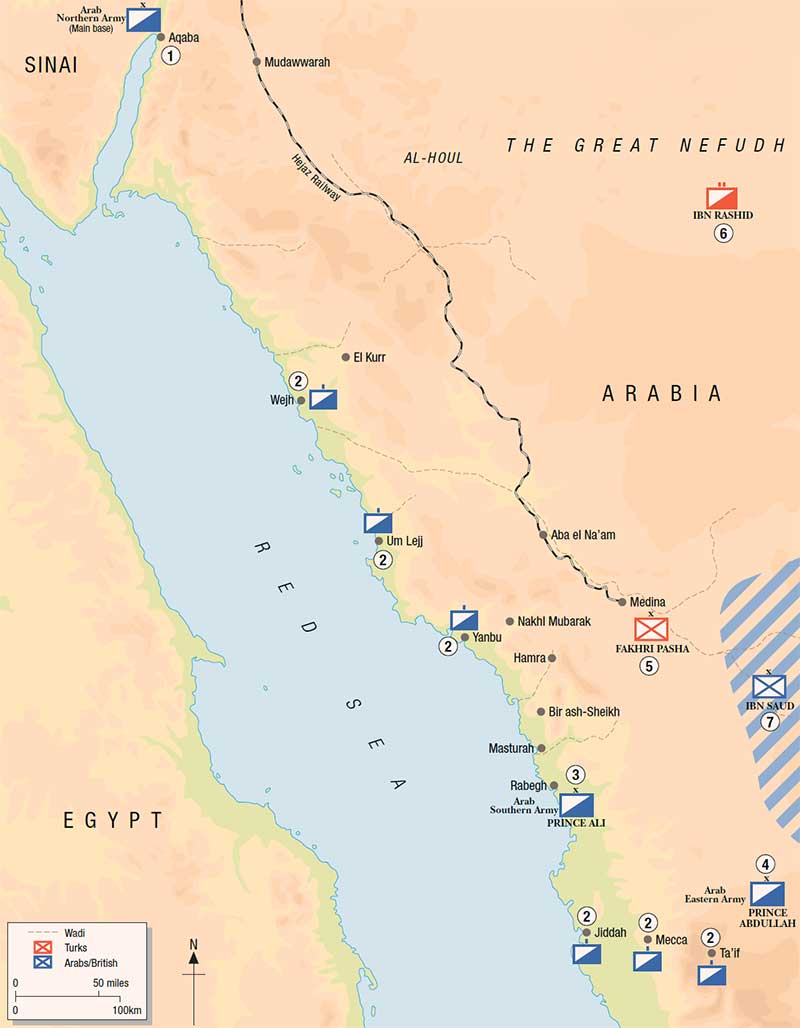
The pro-Ottoman followers of Ibn Rashid, mostly from the Shammer tribe, remained, however. Although less dominant since the defeat of their Ottoman masters, Ibn Rashid still maintained an army until he was curbed in 1919, this time by the forces of Abdul Aziz Ibn Saud. In the years that immediately followed, it was the forces of Ibn Saud that emerged as the dominant force in the Hejaz. He had been supported and supplied by the British during the war and, in 1917, Harry St John Philby had been sent to contact Ibn Saud and sound out his intentions. For Philby, Ibn Saud seemed to be the leader most capable of uniting and ruling Arabia and, although vehemently opposed by Lawrence, it was Philby’s view that eventually held sway with government leaders in Britain. The Hashemites themselves were divided and could not resist the force of emerging Saudi power in Arabia. Despite the wartime assurances of the Allied governments, the Hashemites were left to fend for themselves in the face of increasing Saudi opposition.
In October 1924, Hussein abdicated in favor of his eldest son the Emir Ali, who was then proclaimed as emir of Mecca and king of the Hejaz. Yet the Hashemites were increasingly isolated in Arabia and, in December 1925, Ibn Saud finally unseated them in Arabia, taking control of the Hejaz and the holy cities of Mecca and Medina. The Hejaz therefore became part of the new kingdom of Saudi Arabia. Both Hussein and Ali went into exile. Hussein died in Amman in 1931, while Ali died in Iraq in 1935.
Syria
Even though perhaps the Allied powers declined to become actively involved in the confrontation between the Hashemites and Saudis in the Hejaz, it can be seen that they took a very active part in the allocation of former Ottoman territory in other areas. Nowhere was this truer than Syria.
The Emir Feisal had led his army in the last campaign of the war hoping to become king of Syria. He was bluntly told that this was not to be the case as early as October 1918. The Syrian territories fell within the French remit, as agreed under the terms of the Sykes-Picot Agreement. These allocations would now be debated in post-war conferences, but the French established Général Henri Gouraud as the French High Commissioner of Syria and Lebanon in 1919, while the finer details were being hammered out.
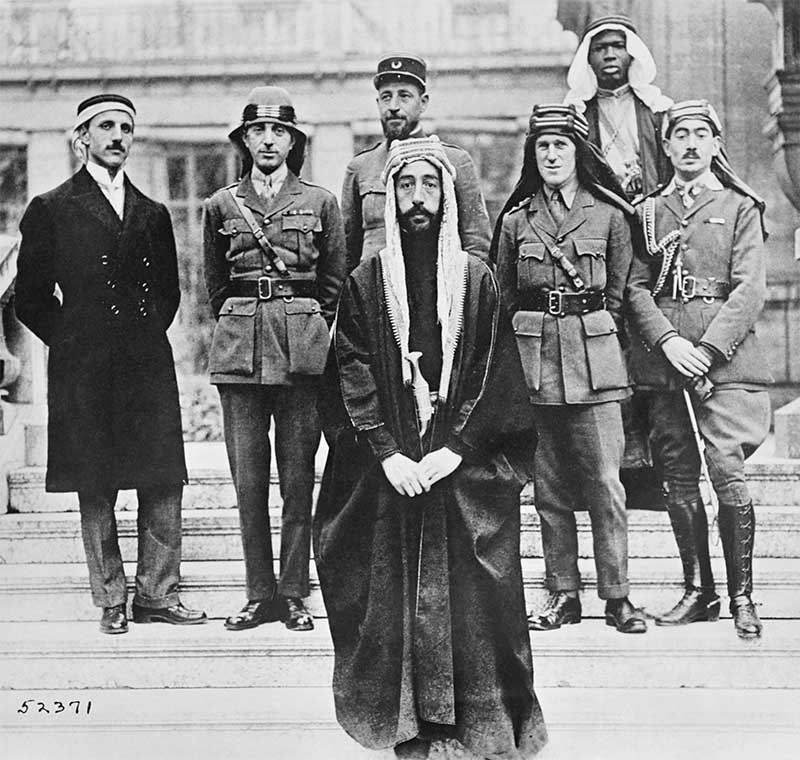
The ultimate fate of the former Ottoman territories was decided in a series of conferences from 1919. Feisal attended the Paris Peace Conference of January 1919 with a delegation that included both, Lawrence and Capitaine Pisani, but could not gain recognition as king of Syria. Two further conferences followed - the Conference of London (February 1920) and the San Remo Conference (April 1920), which were specifically aimed at deciding the fate of the former Ottoman territories. The decisions of the Allied powers were then agreed in treaties with Turkey.
Realizing that his claims would not be recognized, Feisal had continued to gather support in Syria. He was proclaimed as king by the Syrian national congress in March 1920. This was followed by a French military intervention that defeated Syrian forces at the battle of Maysalun on 23 July 1920. The battle at Maysalun, which is about 20 km (12 miles) west of Damascus, was a one-sided affair. The 9,000-strong French force had the benefit of both tanks and aircraft and easily defeated the Syrian Army of around 3,000 men. Syrian deaths numbered over 400, while the French lost 42. Because of this defeat, Feisal was expelled from Syria. The French mandate to govern the Lebanon and the smaller states that make up modern-day Syria (Aleppo, Damascus, etc.) was confirmed by the League of Nations.
Iraq
At the end of the war, the former Ottoman territory of Mesopotamia was in British control. This was renamed as the new state of Iraq. In 1920, a revolutionary war broke out against the new British administration after Britain had been granted the territory under their mandate.
The Iraqi war was the focus of the Cairo Conference of 1921. At this conference, Winston Churchill, who was then colonial secretary, assembled a panel of 40 experts or, as he nicknamed them, the ‘forty thieves’. They included Lawrence, Gertrude Bell and Jafar al-Askari, who was then Minister for War in Iraq. One outcome of the Cairo Conference was the conclusion of an Anglo-Iraqi Treaty, which ended the war. It also saw the installation of Feisal as king of Iraq. This form of government would continue until the Baathist revolution of 1958.
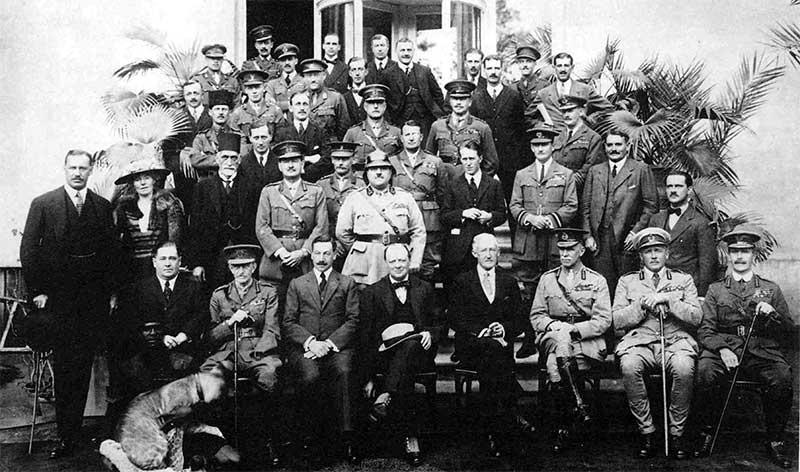
For Feisal, it had been a long and difficult journey from the Hejaz to Iraq, via Palestine and Syria. The new state of Iraq would continue to be troubled by political upheavals throughout his reign. It is interesting to note that many of the leading figures of the revolt remained loyal to Feisal and had later careers in Iraq. Colonel Joyce, who had commanded Hedgehog, later helped organize and train the new Iraqi Army. Jafar al-Askari, former Commander-in-Chief of the Arab Regular Army, served several terms as both Minister for War and Prime Minister of Iraq. Nuri as-Sa’id, who had served as Jafar’s chief of staff, also later served as Iraqi Prime Minister, holding that office no less than 14 times. Both Jafar al-Askari and Nuri as-Sa’id were later assassinated, in 1936 and 1958 respectively, which is testimony to the volatility of the internal politics of Iraq. King Feisal died in 1933 at the comparatively young age of 48.
Palestine and Jordan
Under the terms of the Sykes-Picot Agreement, the British area of control also included Palestine and Jordan, or Transjordan as it then was. In 1921, this mandate was confirmed by the League of Nations and in May 1923, the Emir Abdullah was recognized by the British as the king of Transjordan.
Abdullah had not only commanded the Arab Eastern Army during the revolt, but he had also acted as his father’s Foreign Minister. When Feisal’s Syrian forces had been defeated at Maysalun in 1920, he had moved an Arab Army towards Syria in his support. Following negotiations with Winston Churchill, Abdullah had called off further military action. While Abdullah’s kingly ambitions had initially focused on the Hejaz and the Yemen, he now established a Hashemite kingdom in Transjordan. It was here that his father lived out his life in exile. On 20 July 1951, King Abdullah was assassinated by a Palestinian gunman while attending Friday prayers at the Al Aqsa Mosque in Jerusalem. He was succeeded by his grandson, King Hussein of Jordan (d. 1999), who later became one of the most influential figures in Middle Eastern affairs.
The post-war settlement in Palestine has proved to be the most problematic. It was governed by Britain under the terms of the British mandate and became the focus of a new phase of Jewish settlement in the decades that followed. This process was in keeping with assurances made by Britain from the Balfour Declaration onwards. By 1935, over 60,000 Jewish settlers had settled in Palestine. The subsequent tensions that developed between the Jewish and Palestinian communities destabilized the region and this remains the case up to today. Perhaps the Israeli, Palestinian and international communities are still dealing with the results of implementing the various Allied mandates during the 1920s.
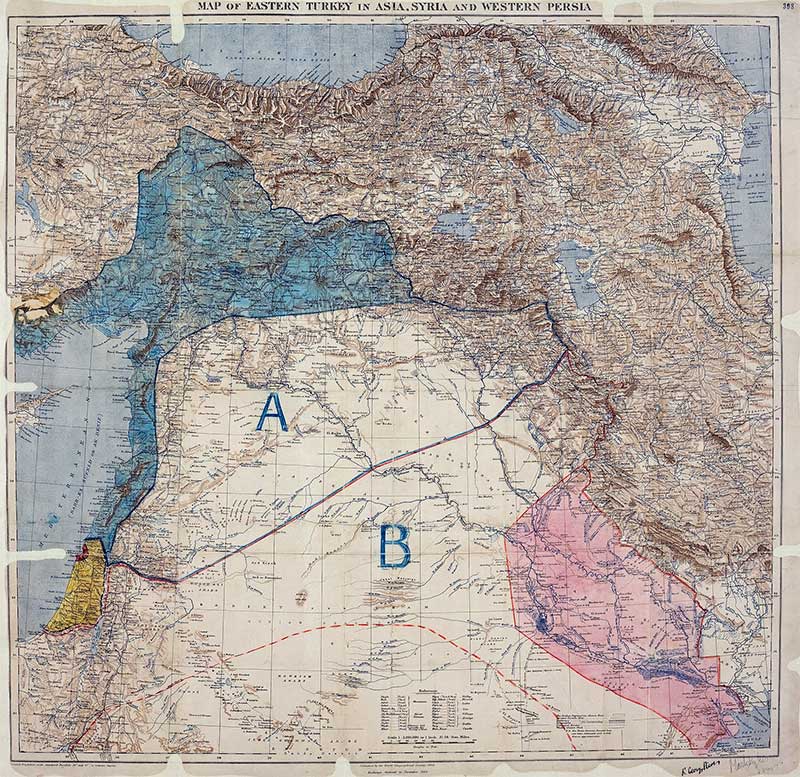
For the people of Arabia and the Syrian provinces, the implosion of Ottoman power following the war had profound effects. Few who became involved in the revolt could have imagined that the final dispensation would turn out as it did. The Middle Eastern region had been changed entirely, but for many, their hopes for the Arab government were quashed as various territories were doled out to be ruled under the terms of the Allied mandates. It was a far cry from the aspirations of the Arab leaders of 1916, be they Hashemite or Saudi supporters. The decades following the war have seen enormous changes in the political demography of Arabia, Palestine, Lebanon, and Syria, but the traces of the wartime political maneuverings of the Allied powers can still be recognized.
The Arab Revolt also had profound effects on 20th-century military doctrine. Many of the methods used during the war were to be revisited during World War II, especially during the desert campaigns. The desert campaign had highlighted the weaknesses of the Ottoman position and illustrated how isolated desert garrisons were vulnerable to attacks on their supply lines and communications. In the desert’s vastness, railways, roads, bridges, and telegraph lines had become prime targets. Camel-mounted tribesmen, as well as Allied soldiers using cars and armored cars, had shown how effective long-range raids could be. Apart from their immediate military impact, the Arab armies also caused tremendous confusion behind enemy lines. It is estimated that the campaign tied down somewhere between 20,000 to 30,000 Turkish troops in Arabia, and this perhaps was its greatest achievement. It is difficult to arrive at final casualty figures for either side, but it has been estimated that the Ottoman Army lost around 15,000 men, including those who succumbed to sickness.
The potential of using vehicles and planes had also been shown, and the Allied armies realized the importance of establishing desert supply depots to aid future operations. Combined with experience gained in Libya during the Senussi Revolt and the campaigns in Palestine, the basis for a new doctrine of desert warfare had been created. These methods would be returned to during World War II, especially by the SAS and the Long Range Desert Group during their campaign of raids in North Africa.
The Lawrence Legend
Larger-than-life characters populated the history of the Arab Revolt. These included both Arabs and men of the Allied missions. They have all receded into the background of history. In the decades that have followed, an enormous amount of historical and public attention has been lavished on the history of the Arab Revolt. One figure has emerged and has remained pre-eminent in all the subsequent outpourings on the Arab Revolt of 1916-18: T. E. Lawrence.
The Legacy of Lawrence of Arabia - Documentary from BBC Scotland (2010)
In 1918, there was no sign that this would be the case. Lawrence was indeed one of the major figures of this campaign and had risen from being a lowly lieutenant to the rank of colonel in the space of just over two years. He had been made a CB and was also awarded a DSO, but he was just one of several distinguished Allied officers.
On his return to England in 1918, he remained passionately committed to the Arab cause and accompanied Feisal to the Paris Peace Conference of 1919. While at this conference, he began writing his memoir of the revolt. This would later be published as Seven Pillars of Wisdom. In June 1919, he was elected as a research fellow of All Souls College in Oxford. 1919 can also be recognized as being a crucial year for Lawrence and also the beginning of the public acclaim that he later enjoyed.
During the war, an American journalist, Lowell Thomas, had visited Arabia in 1918. He used the photographs that he had shot in Arabia as the basis for a series of public shows. The first of these appeared in London in August 1919. At a theater in Covent Garden, Thomas opened a show entitled With Allenby in Palestine, which included a slideshow, a lecture and as well music and dancing. He realized it was Lawrence; the archaeologist turned soldier, who really grabbed the public’s attention. A series of meetings between Thomas and Lawrence followed, and Lawrence posed for further photographs. The new show was now entitled With Allenby in Palestine and Lawrence in Arabia. Its extended run in London was followed by a tour around England. By 1920, Lawrence was a household name.
Lawrence tried to use this popular interest to further his political aims as he increasingly spoke out against the settlements that were being imposed on the former Ottoman territories. In 1921, he was invited to join the Colonial Office as an adviser on Arab affairs and he took part in the Cairo Conference of the same year. It is now obvious that he became increasingly disillusioned with the post-war plans for Arabia. He could not convert his popular image into political pressure, and he ultimately resigned from all offices and, perhaps, turned his back on the world that he had known. In 1922, Lawrence could probably have followed a political, military, or academic career, but joined the RAF as an enlisted man, assuming the name ‘J. H. Ross’. Hounded from the RAF by press exposure, he enlisted in the Tank Corps in 1923, this time as ‘T. E. Shaw’. He would later returned to the RAF in 1925 and remain there, as an enlisted man, until his retirement in February 1935.
This enigmatic behavior has fed public and scholarly interest ever since. Lawrence’s biographers have included academics, former soldiers and also psychologists. Many reasons have been put forward for the way he removed himself from public life. These various motives have included theories of political disillusionment, difficulties with his sexuality, a crisis of identity and the trauma of his wartime experiences. Perhaps all these factors played their part.

In the years that followed, he maintained a low profile within the RAF, while he engaged in correspondence with a vast number of friends and acquaintances. These included literary figures, soldiers, politicians, and academics. Lawrence also indulged in his love for speed. He had a series of high-powered Brough motorcycles and was involved in the development of high-speed RAF rescue boats.
Throughout his years in the RAF, Lawrence continued to develop the text of Seven Pillars of Wisdom. Having lost a draft at Reading Station in 1919, he rewrote the text and circulated proof copies of the new draft in 1922. In 1926, a subscribers’ edition was issued and an abridgement of the text, entitled Revolt in the Desert, was published in 1927. This was well received by a public eager to read his memoirs. Further literary endeavors followed, and Lawrence completed a new translation of Homer’s Odyssey while also completing a memoir of his life in the ranks of the RAF in 1928. Entitled The Mint, this latter memoir would not be published until 1955, long after Lawrence’s death, because of the frank nature of his revelations of life as a ‘ranker’.
Lawrence’s association with figures in the world of the arts resulted in his sitting for various portraits. Artists who painted him included James McBey, William Roberts, and Augustus John. The artist Eric Kennington created a bust of Lawrence, and this would later be used as a memorial in St Paul’s Cathedral. Having retired from the RAF in 1935, he went to live at his cottage at Clouds Hill in Dorset. Just a few months after his retirement, Lawrence was critically injured in a motorcycle accident. He died on 19 May 1935 and was buried at Moreton in Dorset. Among the mourners were Winston Churchill, General A. P. Wavell, Siegfried Sassoon, and Augustus John. Eric Kennington would later create an effigy of Lawrence, in Arab robes, and this is in the church at St Martin’s, Wareham, in Dorset.
The general publication of Seven Pillars of Wisdom in 1935 further fueled the public interest in him. It remains the classic of 20th-century literature and is perhaps Lawrence’s greatest and most long-lasting legacy. It has also fed much debate. It is typical of Lawrence that he was the only source for some of the most dramatic events of his life, such as the execution of Hamed the Moor in 1916 and the rape incident at Deraa in 1917.
Generations of Lawrence scholars and enthusiasts have since debated the veracity of some of his claims. Seven Pillars of Wisdom have been returned to again by a new generation of military officers who were involved in the wars in Afghanistan and Iraq.
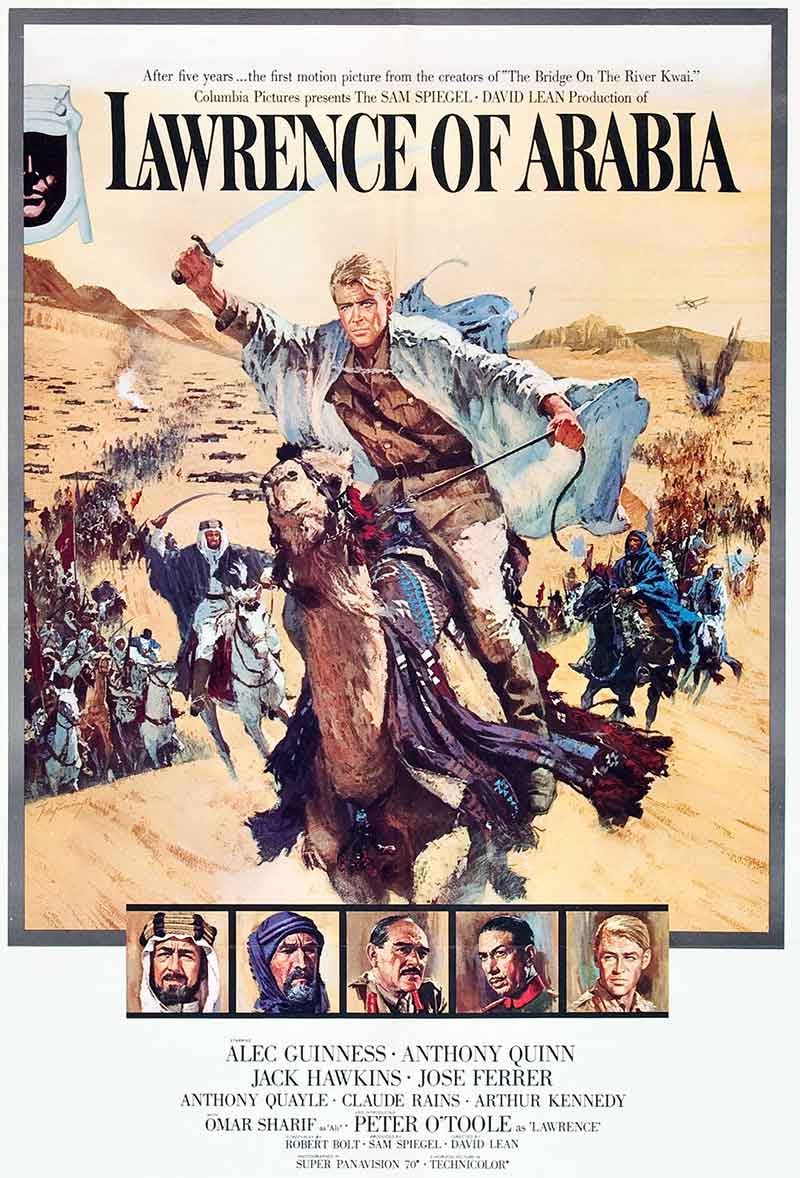
Lawrence has never receded totally from the public eye during the 20th century. His story spawned a whole literature and was also the focus of dramatic works. In 1960, Terence Rattigan’s play Ross received wide acclaim in a London production, with Alec Guinness in the title role. It has since been produced in various theaters around the world. Alexander Korda had thought of producing a Lawrence movie in the 1930s, but it was the 1962 movie Lawrence of Arabia, however, which presented Lawrence to a global audience once again. Directed by David Lean, the movie boasted a stellar cast including Anthony Quayle, Anthony Quinn, Jack Hawkins, Omar Sharif, and Alec Guinness, but Lean cast a virtual unknown, Peter O’Toole, as the enigmatic Lawrence. Regardless of its historical shortcomings and omissions, it was a truly epic movie and is rightly seen as a classic. Lawrence has since been played by various actors, including Ralph Fiennes, in the TV drama A dangerous man: Lawrence, after Arabia (1990).
The story of the Arab Revolt has remained inextricably entwined with that of Lawrence and he will remain in the central role in the literature and public perception of that episode. Lowell Thomas commented that Lawrence ‘had a genius for backing into the limelight’. It was a perceptive comment, and it remains true. Owing to his flamboyant yet enigmatic character, his literary style and his self-promotional abilities, T. E. Lawrence is perceived as the major figure of the Arab Revolt and has become one the iconic figures of the modern era. Lawrence once commented that ‘Colonel Lawrence still goes on; only I have stepped out of the way.’ Over 70 years after his death, this remains true.
Read the previous part:
Start reading from the beginning:
- {{#owner}}
- {{#url}} {{#avatarSrc}}
{{name}} {{/url}} {{^url}} {{#avatar}} {{& avatar}} {{/avatar}} {{name}} {{/url}} - {{/owner}} {{#created}}
- {{created}} {{/created}}


